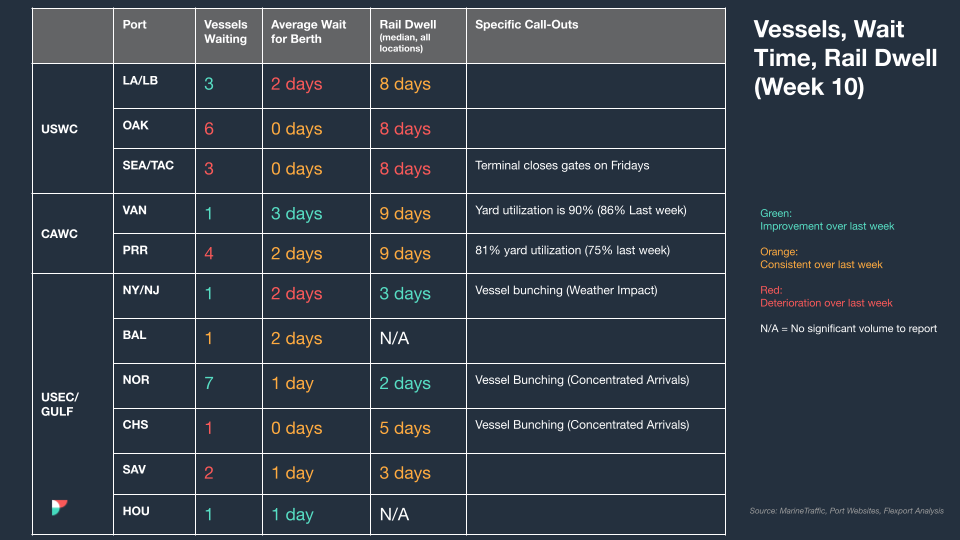Dozens of sailings from Asia to U.S. ports are set to be canceled in October as deteriorating economic conditions weigh on demand to ship goods worldwide
Ocean carriers are canceling dozens of sailings on the world’s busiest routes during what is normally their peak season, the latest sign of the economic whiplash hitting companies as inflation weighs on global trade and consumer spending.
The October cancellations are a sharp reversal from just a few months ago, when scarce shipping space pushed freight rates higher and carriers’ profits to record levels. Last October, companies like Walmart Inc. and Home Depot Inc. were chartering their own ships to get around bottlenecks at ports to meet a surge in demand for imports.
Trans-Pacific shipping rates have plummeted roughly 75% from year-ago levels. The transportation industry is grappling with weaker demand as big retailers cancel orders with vendors and step up efforts to cut inventories. FedEx Corp. recently said it would cancel flights and park cargo planes because of a sharp drop in shipping volumes. On Thursday, Nike Inc. said it was sitting on 65% more inventory in North America than a year earlier and would resort to markdowns.
The erosion in global economic conditions, from the war in Ukraine to factory shutdowns in China, have dealt heavy blows to trade activity. The International Monetary Fund has cut its forecast for global growth in gross domestic product multiple times this year. Consumer prices are rising at the fastest rates in years in the U.S., countries in Europe and other parts of the world.
One response to the melting demand has been to reduce sailing trips. In September, container capacity offered by ship operators in the Pacific was down 13%, dropping the equivalent of 21 ships that can each move 8,000 containers in a single voyage, from a year earlier, according to shipping-data providers Xeneta and Sea-Intelligence.
For the two weeks starting Oct. 3, a total of about 40 scheduled sailings to the U.S. West Coast from Asia and 21 sailings to the East Coast from Asia have been scrapped, according to the data companies as well as customer advisories viewed by The Wall Street Journal. Typically at this time of year, an average of two to four sailings a week are blanked, the industry’s term for canceled sailings.
Carriers also are increasingly canceling trips along key Asia-to-Europe routes, the data providers said.
“In the first week of October, one-third of previously announced capacity will be blanked and for the second week, it will be around half,” said Peter Sand, chief analyst at Xeneta. “The downturn pace in recent weeks has been very fast and it looks like carriers misread the low volumes of a nonexistent peak season.”
The period between late summer and early fall typically is the busiest time of year for the largest carriers, as retailers and other importers build inventories ahead of the holiday shopping season.
Daily freight rates now average $3,900 to move a single container across the Pacific, compared with$14,500 at the start of the year and more than $19,000 in 2021, according to the Freightos Baltic Index.
M editerranean Shipping Co., the world’s largest container carrier by capacity, has voided some sailings recently, including a six-ship service from China to Los Angeles and Long Beach.
The rotation, which MSC operated in alliance with A.P. Moller-Maersk A/S, was suspended “due to significantly reduced demand for shipments into the U.S. West Coast during the past weeks,” according to a customer notice posted Wednesday on MSC’s website. The suspension will remove nearly 12,000 containers a week in capacity from the trans-Pacific trade, and the action would help strengthen the transit times it offers, MSC said in its notice.
MSC declined to comment beyond the notice as did a Maersk spokesman. A Hapag-Lloyd AG spokesman said the company hasn’t canceled sailings as a result of weaker demand. Cosco Shipping Holding Co. and CMA CGM, two other major container operators, didn’t respond to requests for comment.
Some carriers are reluctant to share details on canceled sailings to avoid showing competitors what is happening in their network. Voyages can be scrapped because of port congestion, scheduling issues or falling demand.
Consumer spending on bulky items like furniture and appliances that are often imported into the U.S. has cooled in recent months, according to government data. Such items were in hot demand earlier in the pandemic as Americans spent more time at home and renovated their houses.
A flotilla of new container ships under order will add capacity over the next two years, meaning that freight rates could come under more pressure as more ship space becomes available.
Ocean container capacity is slated to increase 4% this year and is expected to rise by 8.8% in 2023 and a further 9.7% in 2024, according to London-based shipping adviser Braemar PLC. Since early 2020 some 1,056 ships that can move about eight million boxes were ordered, compared with 688 vessels ordered from 2015 to 2019 that can move around five million boxes.
“The global economy has thrown a few curveballs this year, and our outlook on future demand is uncertain and tepid,” said Jonathan Roach, a container analyst at Braemar. “Overcapacity will likely become an issue from the middle of 2023 through to 2024 and potentially beyond.”
Overcapacity pushes operators to undercut each other, putting pressure on freight rates. Boxship operators fought deep losses for nearly a decade starting in 2008, which prompted consolidation in the industry. The top six ocean-freight carriers move more than 70% of all containers worldwide.
Freight rates on key shipping routes remain above prepandemic levels, and the largest operators have plenty of cash to weather a near-term economic downturn. The costs carriers face are rising, too. Bunker fuel prices, which have cooled since hitting records this summer, are above their late 2019 levels. Port operators are also charging more for ships to dock, passing along the higher energy prices they are facing to the carriers.
“The cost of electricity, particularly in Europe, is significant because the cranes and other heavy equipment run on electrical power,” said Tiemen Meester, chief operating officer for ports and terminals at DP World, a Dubai-based operator of terminals in ports worldwide.






